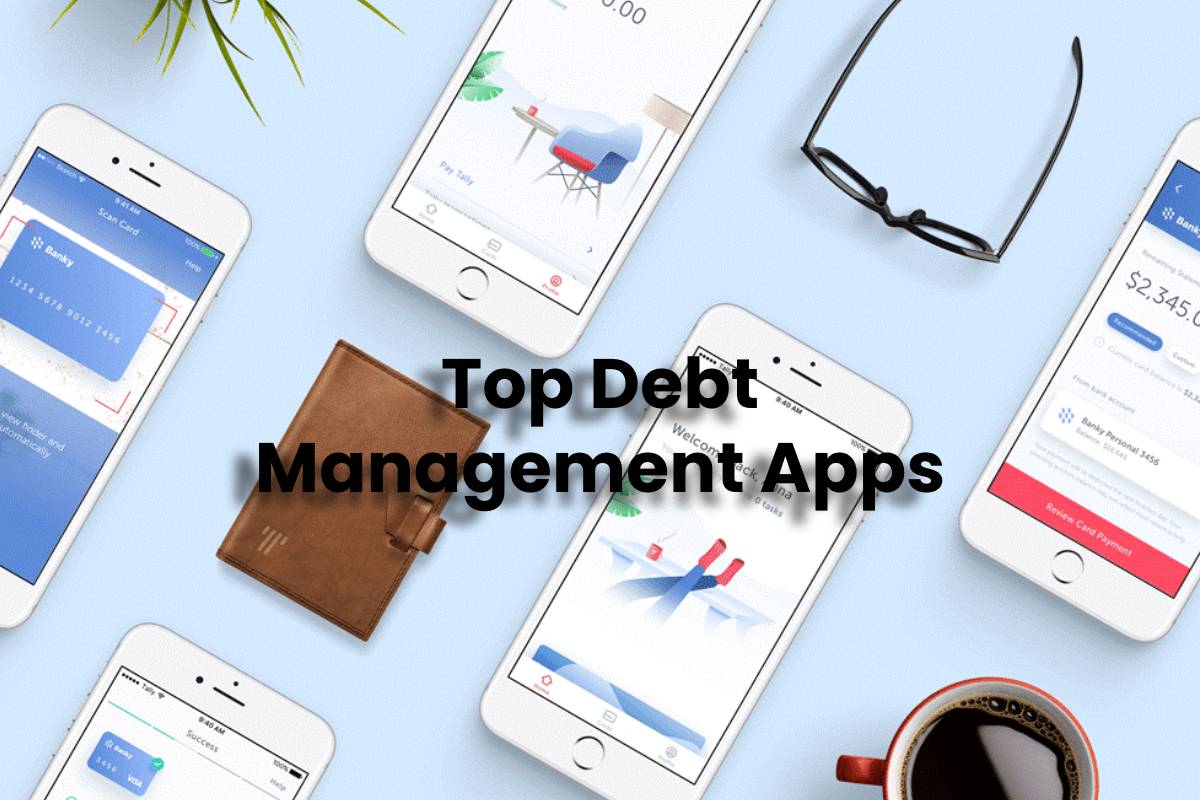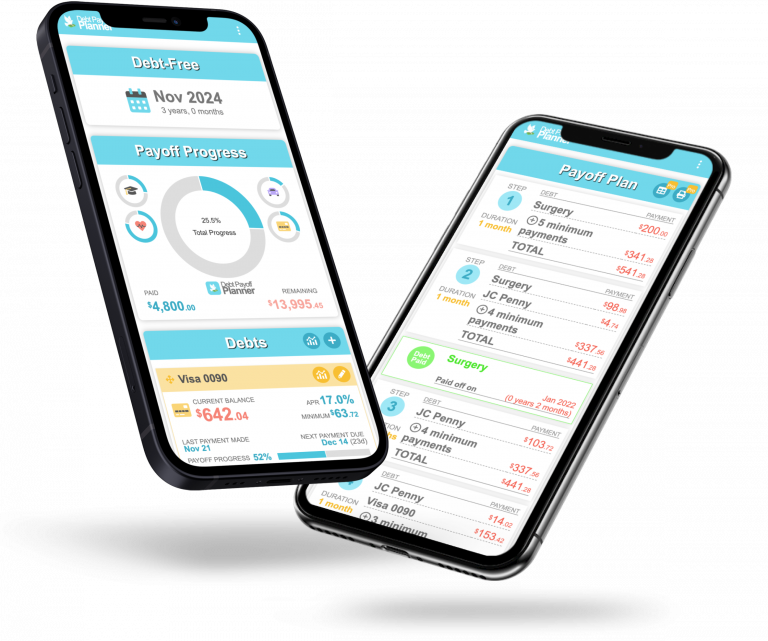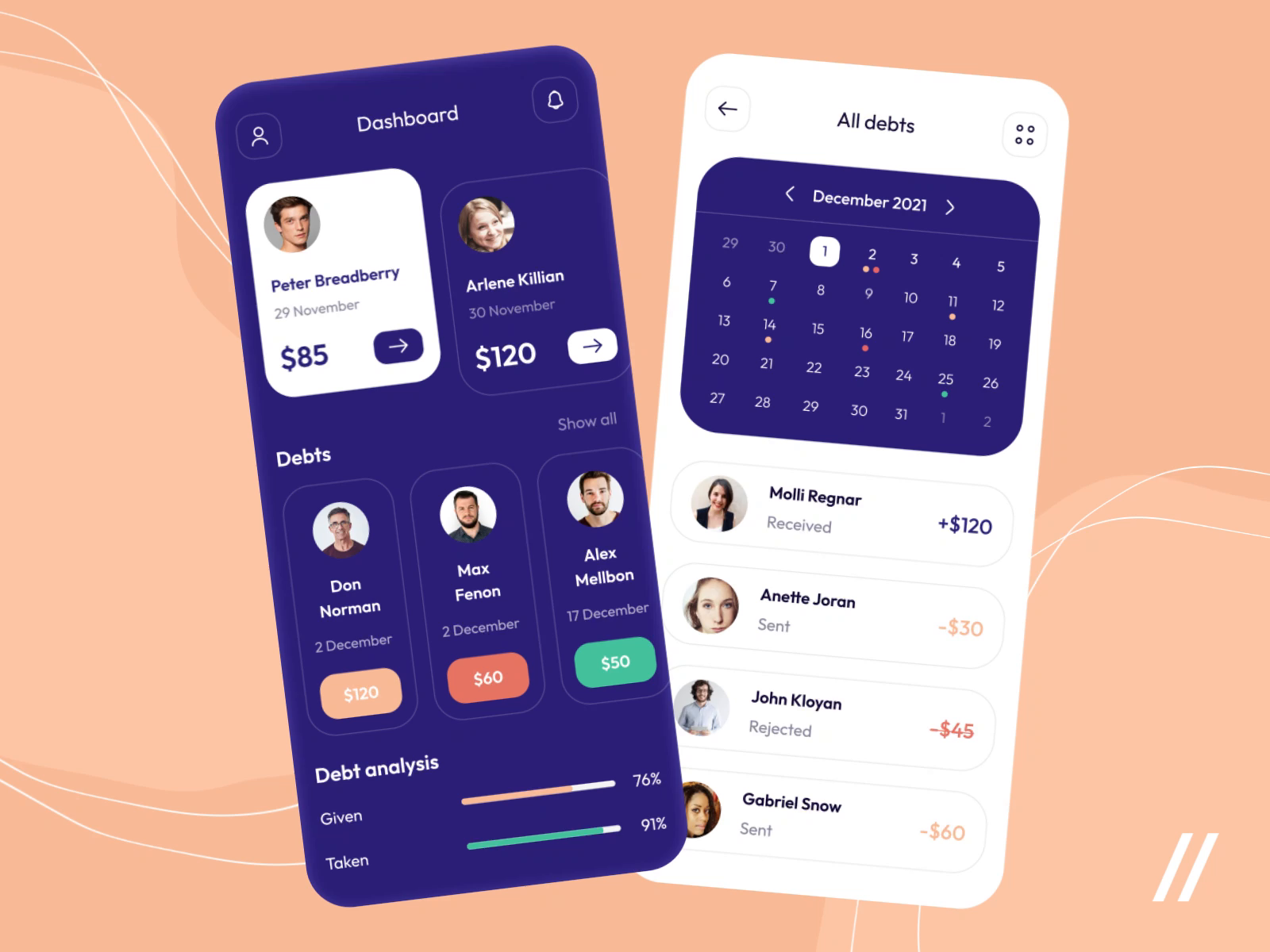Debt management apps are revolutionizing the way we handle our finances. With their innovative features and user-friendly interfaces, these apps empower us to take control of our debt, create budgets, and achieve financial freedom. Dive into the world of debt management apps and discover how they can transform your financial life.
Introduction to Debt Management Apps

Debt management apps are software applications designed to help individuals manage their debts effectively. They provide a range of features to assist users in tracking their debts, creating budgets, and developing strategies for debt repayment.
Using debt management apps offers several benefits. These apps can help users gain a clear understanding of their financial situation, enabling them to make informed decisions about their debt repayment. Additionally, they can automate tasks such as bill payments and budgeting, saving users time and effort.
Benefits of Debt Management Apps
- Enhanced debt tracking and visibility
- Simplified budgeting and financial planning
- Automated debt payments and reminders
- Personalized debt repayment strategies
- Improved financial literacy and money management skills
Types of Debt Management Apps
Debt management apps offer a range of features to help users track, manage, and repay their debts. These apps can be categorized based on their functionality and target audience.
Some common categories of debt management apps include:
Budgeting Apps
These apps help users create and track budgets, set financial goals, and monitor their spending. They can also provide insights into spending habits and identify areas where users can save money.
- Mint
- YNAB (You Need a Budget)
- EveryDollar
Debt Repayment Apps
These apps help users create and manage debt repayment plans. They can track progress, calculate interest charges, and provide motivation to stay on track.
- Debt Payoff Planner
- Undebt.it
- Snowball
Credit Monitoring Apps
These apps help users monitor their credit scores and reports. They can provide alerts for changes in creditworthiness, identify potential errors, and offer tips for improving credit scores.
- Credit Karma
- Experian
- Equifax
Debt Consolidation Apps
These apps help users consolidate multiple debts into a single loan, typically with a lower interest rate. They can simplify debt management and reduce overall interest charges.
- LendingClub
- Upstart
- Prosper
Debt Settlement Apps
These apps help users negotiate with creditors to reduce or settle their debts. They can be a last resort for individuals who are struggling to repay their debts.
- National Debt Relief
- Freedom Debt Relief
- CuraDebt
Features and Functionality of Debt Management Apps
Debt management apps offer a range of features designed to assist users in tracking, organizing, and reducing their debt. These features include:
Debt tracking
Allows users to input and monitor their debts, including balances, interest rates, and payment due dates.
Budgeting tools
Help users create and track budgets, ensuring they have enough funds to cover expenses and make debt payments.
Payment reminders
Notify users of upcoming debt payments, helping them avoid late fees and damage to their credit scores.
Debt consolidation
Some apps offer debt consolidation services, allowing users to combine multiple debts into a single loan with a lower interest rate.
Credit monitoring
Tracks users’ credit scores and provides alerts for changes, helping them stay informed about their financial health.These features work together to provide users with a comprehensive solution for managing their debt. By tracking their debt, creating budgets, and receiving payment reminders, users can gain control over their finances and make progress towards becoming debt-free.
Debt Tracking
Debt tracking is a fundamental feature of debt management apps. It allows users to input and monitor all of their debts in one place, including:
- Credit card balances
- Personal loans
- Student loans
- Mortgages
- Auto loans
By having all of their debts in one place, users can easily see how much they owe, what their interest rates are, and when their payments are due. This information is essential for creating a plan to pay off debt.
Budgeting Tools
Budgeting tools are another important feature of debt management apps. They help users create and track budgets, ensuring they have enough funds to cover expenses and make debt payments. Budgeting tools typically allow users to:
- Track income and expenses
- Set spending limits
- Create savings goals
- Monitor progress towards financial goals
By using budgeting tools, users can gain control over their finances and make sure they are making progress towards their debt repayment goals.
Payment Reminders
Payment reminders are a helpful feature for users who want to avoid late fees and damage to their credit scores. Debt management apps can send users notifications of upcoming debt payments, ensuring they never miss a payment.
Debt Consolidation
Some debt management apps offer debt consolidation services. Debt consolidation involves combining multiple debts into a single loan with a lower interest rate. This can save users money on interest and help them pay off their debt faster.
Credit Monitoring
Credit monitoring is a feature that tracks users’ credit scores and provides alerts for changes. This information is important for users who want to stay informed about their financial health and make sure they are not taking on too much debt.
How to Choose the Right Debt Management App

Selecting the right debt management app is crucial for effectively managing your finances and achieving your debt repayment goals. Here’s a guide to help you evaluate and choose the best app for your needs:
Consider the following factors when evaluating different debt management apps:
Features and Functionality
- Debt Tracking:Track your outstanding balances, due dates, and interest rates across multiple accounts.
- Budgeting Tools:Create and manage budgets to allocate funds effectively and avoid overspending.
- Payment Scheduling:Set up automatic or manual payments to ensure timely debt repayments.
- Debt Consolidation:Explore options for consolidating your debts into a single loan with a potentially lower interest rate.
- Credit Monitoring:Monitor your credit score and receive alerts for any changes.
- Educational Resources:Access educational materials and financial advice to improve your financial literacy.
Cost and Fees
- Subscription Fees:Some apps charge a monthly or annual subscription fee.
- Transaction Fees:Certain apps may charge fees for specific transactions, such as debt consolidation or payment processing.
User Interface and Usability
- Ease of Use:The app should be user-friendly and easy to navigate.
- Mobile Accessibility:Choose an app that offers a mobile version for convenient access on the go.
Security and Privacy
- Data Protection:Ensure the app employs strong encryption measures to protect your sensitive financial information.
- Privacy Policy:Review the app’s privacy policy to understand how your data is collected and used.
Customer Support, Debt management apps
- Availability:Assess the availability and responsiveness of customer support.
- Support Channels:Consider the various support channels offered, such as phone, email, or live chat.
Tips for Evaluating Different Apps
- Read Reviews:Check app reviews on trusted platforms to gather insights from other users.
- Free Trial:If available, take advantage of free trial periods to test the app before committing to a subscription.
- Compare Features:Create a comparison table to assess the features and functionalities offered by different apps.
- Consider Your Needs:Identify your specific debt management needs and prioritize apps that cater to those requirements.
Security and Privacy of Debt Management Apps
The security and privacy of user data are paramount in debt management apps. These apps handle sensitive financial information, so it is crucial that they implement robust measures to protect user data from unauthorized access, theft, or misuse.
To ensure the security of user data, debt management apps typically employ a range of security measures, including:
Encryption
- Encryption ensures that user data is protected from unauthorized access, even if it is intercepted.
- Debt management apps typically use strong encryption algorithms, such as AES-256, to encrypt user data both at rest and in transit.
Authentication
- Authentication measures are used to verify the identity of users before they are granted access to their accounts.
- Debt management apps typically use a combination of password-based authentication and two-factor authentication (2FA) to protect user accounts.
Authorization
- Authorization measures are used to control access to specific features and functions within the app.
- Debt management apps typically implement role-based access control (RBAC) to ensure that users can only access the data and features that they are authorized to use.
Privacy
- Debt management apps are also required to comply with privacy laws and regulations, such as the General Data Protection Regulation (GDPR) in the European Union.
- These laws and regulations impose strict requirements on how debt management apps can collect, use, and share user data.
Benefits and Drawbacks of Using Debt Management Apps
Debt management apps offer numerous benefits to users seeking to manage their finances effectively. These apps provide a convenient and organized platform for tracking expenses, setting budgets, and monitoring debt repayment progress. However, it is essential to acknowledge potential drawbacks and limitations associated with their use.
Benefits of Using Debt Management Apps
- Simplified Debt Tracking:Debt management apps allow users to consolidate all their debt accounts in one place, providing a comprehensive view of their financial obligations.
- Budgeting and Expense Management:These apps help users create and adhere to budgets, categorizing expenses and identifying areas for potential savings.
- Automated Payment Reminders:Many debt management apps offer automated payment reminders, ensuring timely debt repayments and avoiding late fees.
- Personalized Debt Repayment Plans:Some apps generate personalized debt repayment plans based on individual financial situations, helping users prioritize and pay off debts strategically.
- Credit Score Monitoring:Certain debt management apps provide credit score monitoring, enabling users to track their credit health and make informed financial decisions.
Drawbacks and Limitations of Using Debt Management Apps
- Potential for Inaccuracy:Debt management apps rely on user input for data accuracy. Errors in data entry can lead to inaccurate calculations and ineffective debt management.
- Limited Integration:Some debt management apps may not integrate seamlessly with all financial institutions, making it challenging to track all debts in one place.
- Privacy Concerns:Debt management apps collect sensitive financial information. Users should carefully review privacy policies to ensure their data is handled securely.
- Fees and Charges:While many debt management apps are free to use, some may charge subscription fees or offer premium features at an additional cost.
- Not a Substitute for Professional Advice:Debt management apps should not be considered a substitute for professional financial advice. Complex financial situations may require personalized guidance from a qualified financial advisor.
Case Studies and Success Stories

Debt management apps have proven to be effective tools for individuals seeking to improve their financial well-being. Numerous case studies and success stories demonstrate the transformative impact of these apps in helping people overcome debt and achieve financial stability.
One notable example is Sarah, a single mother who struggled with overwhelming credit card debt. After downloading a debt management app, she was able to create a personalized budget, track her expenses, and identify areas where she could reduce spending.
By following the app’s recommendations, Sarah was able to reduce her debt by 50% in just six months.
Specific Features and Strategies
The success stories of individuals like Sarah highlight the importance of specific features and strategies offered by debt management apps. These include:
- Personalized budgeting:Apps help users create customized budgets based on their income and expenses, ensuring they allocate funds effectively.
- Expense tracking:By tracking every transaction, users gain a clear understanding of their spending patterns, allowing them to identify areas for improvement.
- Debt consolidation:Some apps offer debt consolidation services, combining multiple debts into a single loan with a lower interest rate, simplifying repayment.
- Negotiation assistance:Certain apps provide guidance and support in negotiating with creditors, potentially reducing interest rates or extending payment deadlines.
- Credit monitoring:By monitoring credit scores and reports, apps help users stay informed about their financial health and identify any potential issues.
These features and strategies work in tandem to empower individuals with the knowledge and tools they need to manage their debt effectively and achieve financial success.
Future of Debt Management Apps
The future of debt management apps is promising, with emerging trends in debt management technology driving innovation and enhancing user experiences. These apps are poised to become even more sophisticated and integrated, offering a comprehensive suite of features that empower users to effectively manage their debt and achieve financial well-being.
One notable trend is the integration of artificial intelligence (AI) and machine learning (ML) into debt management apps. These technologies can analyze user data, identify spending patterns, and provide personalized recommendations tailored to their specific financial situation. AI-powered chatbots and virtual assistants can also offer real-time support and guidance, making it easier for users to stay on track with their debt repayment plans.
Emerging Trends
- Integration of AI and ML for personalized recommendations and real-time support
- Increased use of data analytics to track spending patterns and identify areas for improvement
- Enhanced security measures to protect user data and prevent fraud
- Gamification and rewards systems to motivate users and make debt repayment more engaging
- Collaboration with financial institutions to provide seamless integration with bank accounts and credit reports
Potential Impact
- Improved debt management and financial literacy among users
- Reduced reliance on traditional debt counseling services
- Increased accessibility to debt management tools for underserved populations
- Empowerment of users to take control of their financial future
- Potential reduction in consumer debt and improved overall financial health
Last Word
Debt management apps are not just tools; they are financial companions that guide us on the path to financial well-being. Embrace the power of these apps, and you’ll be amazed at how they can simplify your financial journey and bring you closer to your financial goals.
Q&A
What are the benefits of using debt management apps?
Debt management apps offer numerous benefits, including automated debt repayment, personalized budgeting tools, credit score monitoring, and access to financial advice.
How do I choose the right debt management app for me?
Consider factors such as your financial goals, the features offered by different apps, and the security measures they implement.
Are debt management apps secure?
Reputable debt management apps employ robust security measures to protect user data, including encryption, multi-factor authentication, and data privacy policies.
